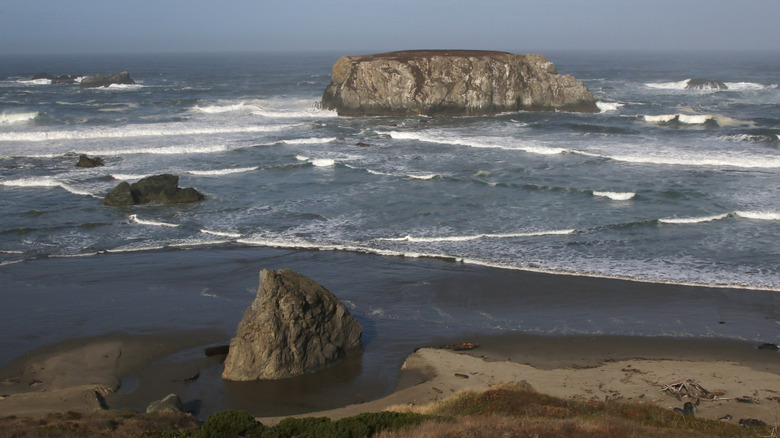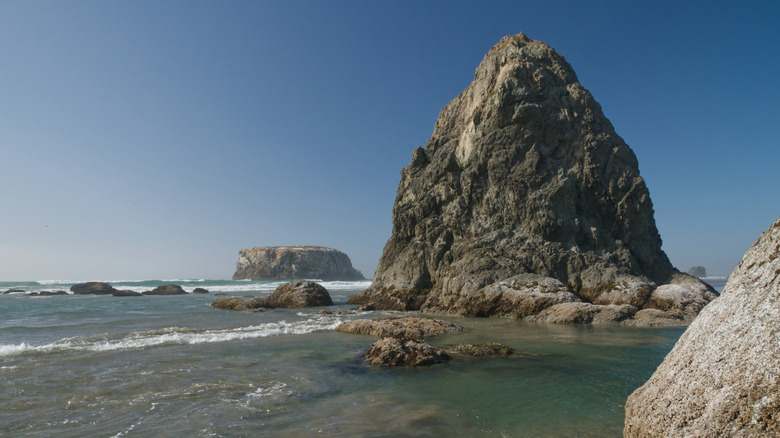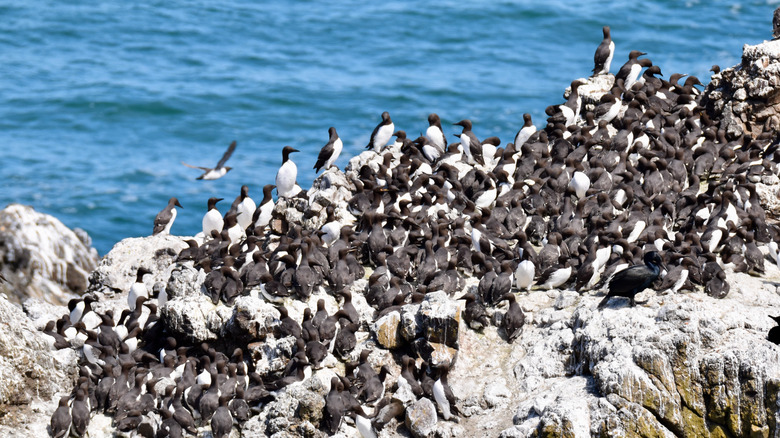Oregon's Coastal Wildlife Refuge With Unique Wildlife Links Over A Thousand Charming Islands
Off the coast of Oregon is a speckled display of rock formations jutting from the water. What looks like a scattering of craggy islands is actually a protected habitat that supports over a million seabirds: the Oregon Islands National Wildlife Refuge. More than 1,400 charming islands fall under its protection. This federal land is part of the many wonders that make up the region's shoreline, which includes marvels like the largest sea cave in North or South America.
Under Oregon's moody skies, onlookers might spot black oystercatchers stepping along shore tops, pigeon guillemots tucked into crags, or tufted puffins diving into the whitewash. Threatened and endangered species, like brown pelicans and bald eagles, can also be seen flying between the rocky outcrops, with sea lions and seals hauled on sunny ledges below.
America's Wildlife Refuge system was created in 1903 to protect land that is heavily relied on by wildlife and to ensure that the animals' needs are the main management driver for each property. The 320-mile Oregon Islands National Wildlife Refuge was designated on May 6, 1935. It is one of six refuges in the Oregon Coast National Wildlife Refuge Complex, which is defined as a group of protected landscapes that are close together and have similar management requirements. Every tiny rock and reef, save for one lone acre belonging to Tillamook Rock, is also classified as federal wilderness, meaning they remain untouched and pristine.
Where to go for the best views of the Oregon Islands Refuge
Massive rock formations and sea stacks jut from the surf to create a series of beautiful island views. Take a breathtaking scenic drive along the Oregon coast to fully experience the refuge, and you'll soon realize why this is one of the most popular places to stop and snap a photo in the United States. Most travelers head to the coast from the Portland International Airport, roughly 80 miles away from the closest access to the shoreline. Highway 101 hugs the coast up and down the state, with scenic turnouts where you can spot the islands amongst the waves.
One of the most accessible and impressive places to see the refuge is at the Coquille Point Trail in Bandon, Oregon. A mainland unit of the refuge, Coquille Point is accessible all year round. Other mainland sites that have designated overlooks include Ecola State Park, Heceta Head State Scenic Viewpoint, Cape Meares State Scenic Viewpoint, and Yaquina Head Outstanding Natural Area. At many stops, designated platforms give you a front-row view of seabird colonies flocking along cliffs and sea stacks.
Many of these trails feature educational signs, easy beach access to tidepools, and paved paths suitable for most visitors. Bring good walking shoes, binoculars, and water. Temperatures along the Oregon coast typically range from 45 degrees to 75 degrees Fahrenheit. Rain, wind, and fog are common weather conditions, so dress appropriately. High tides can cut off rocks from the mainland and leave you stranded, so check the tide schedules beforehand and don't wander out to rocks during rising tides.
The best time of year to experience Oregon's Coastal Wildlife Refuge
Visiting the rugged refuge is rewarding no matter the time of year, since each season brings different viewing experiences. Start by booking a room at one of Oregon's many coastal towns, like Rockaway, a cute beach city with sleepy vibes on the northern half of the state's shoreline.
Spring and summer are when visitors can expect to see the most birds. Spring brings a migration of seabirds back to the rocks to nest and breed, giving way to a buzzing summer. Fuzzy chicks learn to fly while seals and sea lions soak up rays. Hundreds of common murres cluster together, bringing life to the austere rock formations. In August and September, white-bodied humpbacks and resident gray whales continue to frequent offshore waters. As fall approaches, another wave of shorebird migration begins. This time, species like sandpipers and plovers pause at the refuge between destinations. As fall fades to winter, ducks, geese, and raptors are the stars of the show, while gray whales can be seen passing by on their way to Mexico to calve.
Take the time of day into account when planning your visit. Birds are typically most active in the early morning and early evenings rather than throughout the middle of the day. And, perhaps most importantly, as you explore, be cautious and aware of the powerful surf, strong currents, and steep cliffs you'll find all along the Oregon coastline.


